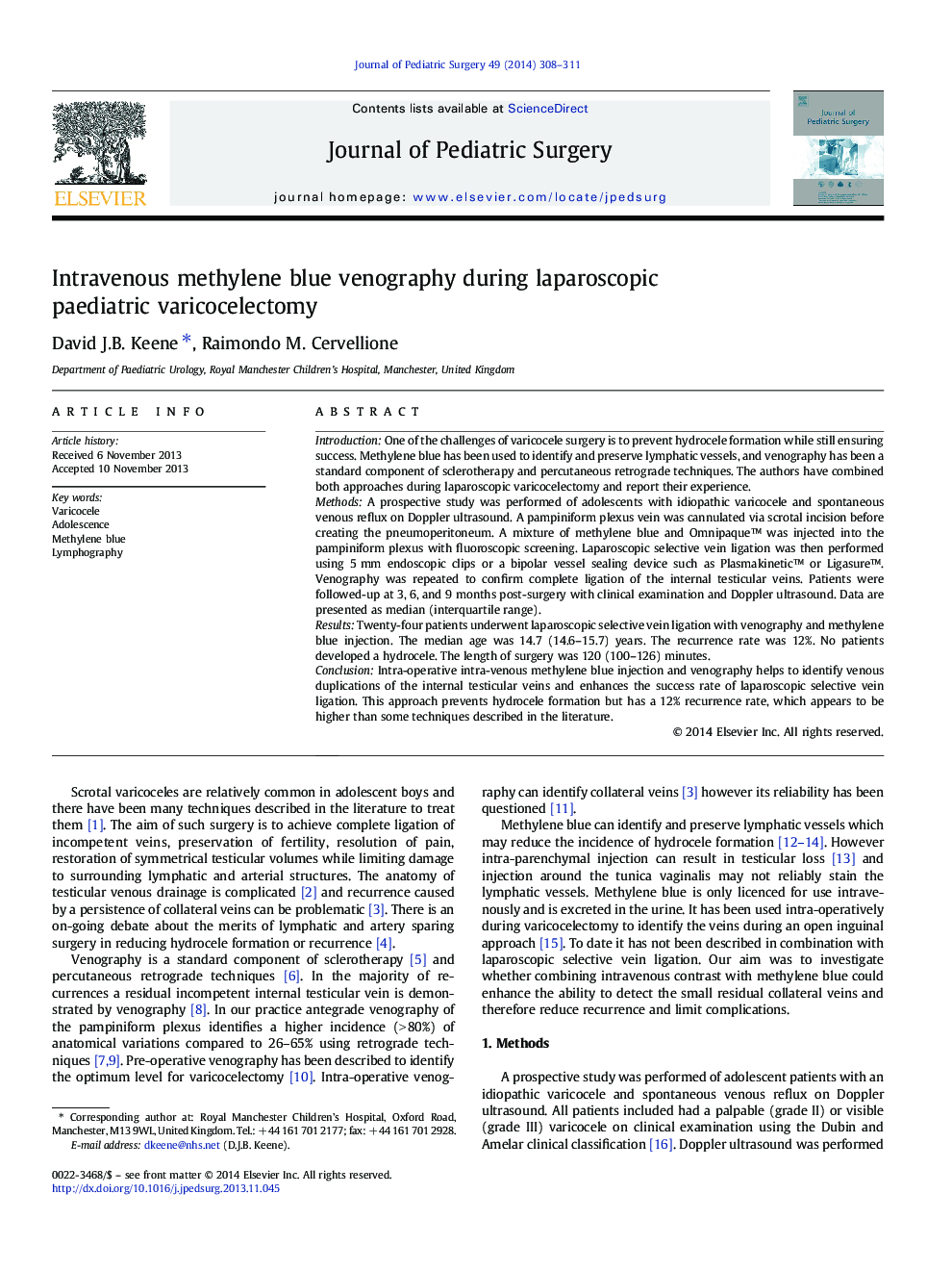| Article ID | Journal | Published Year | Pages | File Type |
|---|---|---|---|---|
| 4155413 | Journal of Pediatric Surgery | 2014 | 4 Pages |
IntroductionOne of the challenges of varicocele surgery is to prevent hydrocele formation while still ensuring success. Methylene blue has been used to identify and preserve lymphatic vessels, and venography has been a standard component of sclerotherapy and percutaneous retrograde techniques. The authors have combined both approaches during laparoscopic varicocelectomy and report their experience.MethodsA prospective study was performed of adolescents with idiopathic varicocele and spontaneous venous reflux on Doppler ultrasound. A pampiniform plexus vein was cannulated via scrotal incision before creating the pneumoperitoneum. A mixture of methylene blue and Omnipaque™ was injected into the pampiniform plexus with fluoroscopic screening. Laparoscopic selective vein ligation was then performed using 5 mm endoscopic clips or a bipolar vessel sealing device such as Plasmakinetic™ or Ligasure™. Venography was repeated to confirm complete ligation of the internal testicular veins. Patients were followed-up at 3, 6, and 9 months post-surgery with clinical examination and Doppler ultrasound. Data are presented as median (interquartile range).ResultsTwenty-four patients underwent laparoscopic selective vein ligation with venography and methylene blue injection. The median age was 14.7 (14.6–15.7) years. The recurrence rate was 12%. No patients developed a hydrocele. The length of surgery was 120 (100–126) minutes.ConclusionIntra-operative intra-venous methylene blue injection and venography helps to identify venous duplications of the internal testicular veins and enhances the success rate of laparoscopic selective vein ligation. This approach prevents hydrocele formation but has a 12% recurrence rate, which appears to be higher than some techniques described in the literature.
